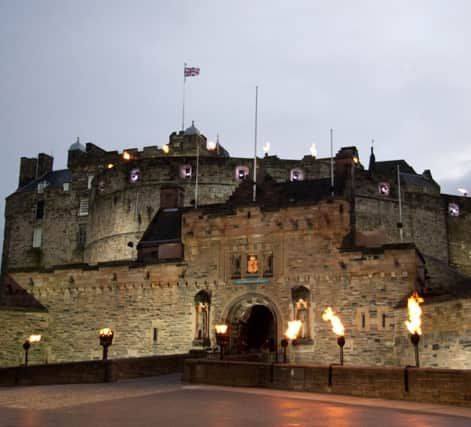Bid to lower energy costs at Edinburgh Castle


It comes amid a major programme of work across the country to make Scotland’s historic properties fit for an energy efficient future.
Heating and lighting bills have dropped by around 30 per cent at Edinburgh Castle over the past eight years as a result of the programme, according to Historic Environment Scotland.
Advertisement
Hide AdAdvertisement
Hide AdLast year, almost £195,000 was spent on electricity, with the gas bill totalling just over £103,000.
Roger Curtis, technical research manager at Historic Environment Scotland, said Scotland had taken big strides with the work it had done to limit energy expenditure in some of the country’s oldest buildings.
“We have been at this since 2010 and we can say with some degree of pride that we are certainly way ahead of most people in the UK. We really started early on this,” he said.
Curtis said Edinburgh Castle had been a stiff challenge because it was a “very public” place made up of 27 separate buildings with some of the walls around five feet thick.
Advertisement
Hide AdAdvertisement
Hide AdHe said sheep wool had been put in the attic of some parts with new boilers and low energy bulbs part of the package of the improvements.
“You have this site, some of which dates from medieval times and other parts from the 19th century, such as the barracks. You also have a modern café within all that to consider,” he said.
Other recent projects have included a radiant heat trial at Kilmartin Church in Argyll where radiant panels were fitted to walls in order to heat surfaces, rather than cold air.
An air source heat pump was then used to boost the temperature by around 14 degrees Celsius.
Advertisement
Hide AdAdvertisement
Hide AdThe project is considered a successful use of new technologies at a time when building fabrics across Scotland are at risk of further degradation given increased wet weather in some parts.
At Blair Castle in Perthshire, a hydro scheme which ran 100 years before the stronghold was connected to the National Grid has been revived to provide power to the property.
Curtis said: “In Scotland we are relatively lucky as the majority of these buildings are similar in the sense that they use a similar range of traditional materials although they are different geometrically in scale.”
He added that a key trick to creating a warm room was to insure that a timber floor was not cold. “You just feel much warmer if your feet aren’t cold. Sometimes all you need is a well insulated floor.”